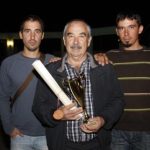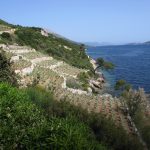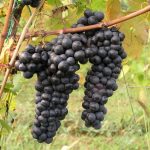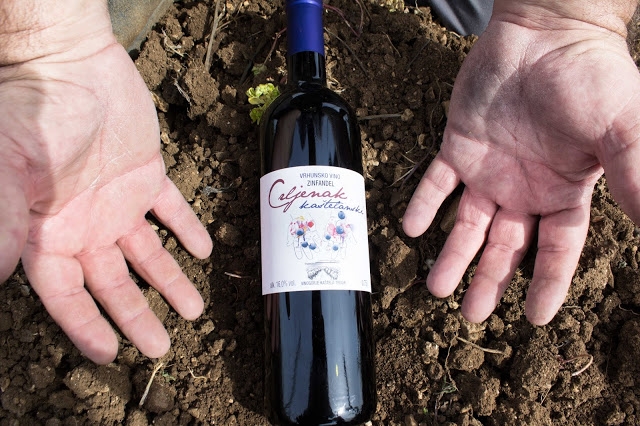
“It’s a movie story – Americans discover roots of their Zinfandel at Wild West hero’s vineyard!”
Not so far away fire sirens kept wailing, for several minutes. Ivica Radunić, professional firefighter, did not flinch. He was adamant in his intent to complete the works he planned for the day in his vineyard in the Budožić area in Kaštel Štafilić. He paused only for a moment, looking in the direction of the sirens and smiled:
“Nothing to worry about, my colleagues from Split Airport are using sirens to chase away seagulls. This is common practice before landings and takeoffs in case birds pose a danger. So, a routine activity. However, there were situations when duties in the vineyard kept me away even from more serious situations with real fires in the area. I would be in the middle of churning up the soil and using the walkie talkie I would command the action from the vineyard. Many would think I was already at the scene based on my advice where to approach with the vehicle,” says Ivica, the “best winemaker among firefighters and the best firefighter among winemakers,” a huge man of 130 kilograms still brandishing the nickname he earned in his childhood – Kid.
“Everyone in Kaštela knows me as Kid, not many as Radunić. When we played cowboys and Indians as kids, I was always Billy the Kid, we built fires and put them out, those were the beginnings of my firefighting days…”
Ivica’s first serious firefighting steps came in 1971, when he participated as a member of the local volunteer firefighting society in Kaštela at the national firefighters competition in Kraljevo, Serbia, where his team won first place. Ivica likes to brag that his volunteer firefighting society was first for years in state and national competitions, and “it will be remembered that Kaštela firefighters were the last champions of former Yugoslavia, at the competition in Zrenjanin in 1988.” A year later in Poland he won gold in the firefighting Olympics, was part of the team that became Croatian state champion in 1992, while in 1993 he was part of the first team to compete under the Croatian flag at the firefighting Olympics (with two teams from Kaštela) and – a gold medal at that competition! His heartiness and humanity is seen in the fact he gave blood 49 times, passing on such attitude to his family – his older son gave blood 19 times, his son’s wife 8 times and recently his younger son did so for the first time.
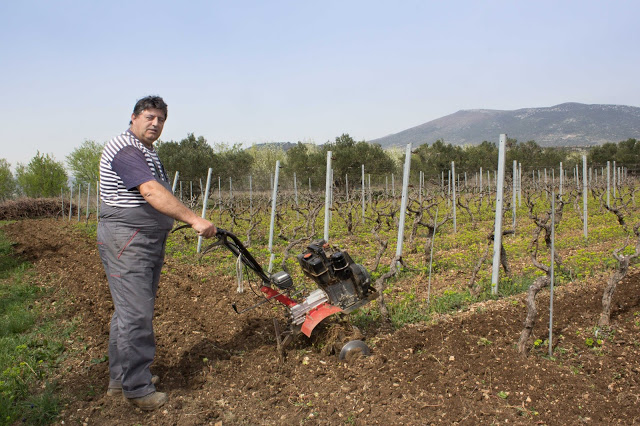
“I have been with firefighters since the distant 1970, when I volunteered for the Firefighting Society Donja Kaštela – Kaštel Stari. I wasn’t even 10 then. So, I have been a firefighter for 47 years, 30 of those as a complete volunteer. It is a great love, austerity, desire to save others… There isn’t an island in Dalmatia where I haven’t taken part in a large firefighting operation, nor a place between Dubrovnik and Biograd na Moru, where we helped out in other counties. Since the independence of Croatia I have had over 4.500 interventions, over 150 annually,” Ivica boasted.
He also put out vineyards on fire, although, he claims, “if a vineyard is cultivated then it will not burn easily – a vineyard burns when it is neglected and full of weeds. This is why I also clean the neglected vineyard next to mine, as this is the best way to prevent potential summer fire disasters.”
Ivica likes to say about himself that he comes from a family raised by vines, “living off the vines.” Just like, he says, all Kaštela folk who were tied to the field, vineyard and wine.
“In the end of the 1970s came different times when I didn’t see myself in the vineyard like my father. However, circumstances were such that I did get a job in a company, working and living off a salary, but spent all my free time in the vineyard helping my father and practically learning everything about grapes and wine from him. Years passed, 1991 came, the company I worked in went bankrupt. My third child came in 1991 on March 7 and I was laid off 5 days later. Then I devoted myself even more to the field, the vineyard and vines got me out of the situation after losing my job. Several years later I had begun expanding the vineyard with Maraština and Plavac Mali. When I did that, many in Kaštela told me I was not normal, as “everyone is clearing vines from the Kaštela field, it’s not worth the effort.” I ignored the comments, as I simply did not know how to do anything else. I should have, maybe, gone to learn something else, put up greenhouses for salad production, but I had no knowledge of that. We had vineyards, a cellar and family tradition, in the end of the 1960s Dalmacijavino alone bought 20.000 litres of wine from us through the local cooperative. As far as my work in the vineyard, I decided for less, but – better. I reduced quantities, mechanisation came, no more horses and ploughs. I raised quality and then I had to raise the price. Less, but better came true in my case.”
Ivica can boast of finding in the old part of his vineyards 8-9 vines which were ascertained through DNA analysis to be identical to the legendary American Zinfandel. They are still there today next to the funny antenna resembling a poisonous mushroom which used to send signals to airplanes landing at the nearby airport.
“Where else will you find the root of Zinfandel than in the vineyard of the hero of the Wild West, Billy the Kid? It’s a movie story – Americans discover roots of their Zinfandel at Wild West hero’s vineyard! Agronomy Faculty professors Edi Maletić and Ivan Pejić were sent to my vineyard by Ante Vuletin, director of the agricultural cooperative Kaštela-coop. He knew them from before. This was in 1999, when they came to my vineyard for the first time, but a storm prevented them from taking samples. They came again in the spring of 2000, took samples and returned in the fall. Then again in the spring of 2001, collecting samples from around 50 old vines. They said right away are the samples they were looking for are among them and they sent the complete material to professor Carole Meredith from the UC Davis, a world renowned geneticist. She was the first to inform us that the vines analysed from my vineyard contain Zinfandel. This was in the beginning of September 2001, on Edi Maletić’s birthday. She let us know a new history is being written, as the root of Zinfandel has been found! My father created several more rows in that vineyard so now I have there 250-300 vines of Crljenak Kaštelanski or Zinfandel or Tribidrag, as you like, while in the Bijači area I planted a completely new vineyard with this variety, four years old.”
Despite the sensational discovery from his vineyard, Ivica Radunić called Kid did not gain a single new buyer from that information. In fact, Ivica only recently bottled for the first time the truly great Crljenak Kaštelanski and marketed it in almost symbolic 500 bottles!
“In 2000 we printed ourselves a temporary label on the office printer, stuck them on ourselves, but that was not official. This is now my first official label for Crljenak Kaštelanski 2015. I have sold my wine before, but from the tank, as it is the quickest, easiest and simplest way to get my money back. I don’t have the quantity and don’t see myself in supermarkets or anywhere else. Giving up my wine and waiting several years to earn money, that is not for me. Whoever wants to buy my wine, has only one rule – cash and carry. I give wine, you give cash! Living only off the field would be a hard way to survive, and those who go for larger quantities later have issues with sales. So I still work in firefighting and that answers why I just released my first bottled wine.”
Regardless of the non-existent marketing, Ivica enjoys a great reputation in the Kaštela area, being especially fond of the award for the model newly erected vineyard. At the time when it was established that the DNA of Zinfandel is identical to Crljenak Kaštelanski from Ivica’s vineyard, Zinfandel was grown in California on 20.000 hectares, while Crljenak Kaštelanski was dying out, less than ten vines in all of Kaštela vineyards. Just like Zinfandel was taken to America from the Imperial Nursery in Vienna in 1820, so did the rebirth of its ancestor, Crljenak Kaštelanski, which the locals refuse to call Tribidrag, begin in Ivica’s vineyard on Budožić. Ivica poured this entire story onto the wonderful label of his Crljenak Kaštelanski.
“The idea was appreciated first by my son’s wife, she found a designer who began working on it. She placed in the palms seven blue grapes for seven Kaštela towns, below is the Kaštela-Trogir wine area, from the vineyards you can see the sea, Čiovo Island, Marjan hill… Some symbolism, to avoid the usual barrel, grape, donkey and similar. This is now the copy of my hand, also the hands of my father and grandfather and all in the Radunić family who worked in the vineyard. Kaštela were always focused on the field, not the sea and this label shows it, just as it shows this wine is hand made.”
For the original and more from Vinske Priče blog on wine, click here.
http://zeljko-vinskeprice.blogspot.hr/2017/04/ivica-radunic-gdje-cete-pronaci-korijen.html?view=classic


